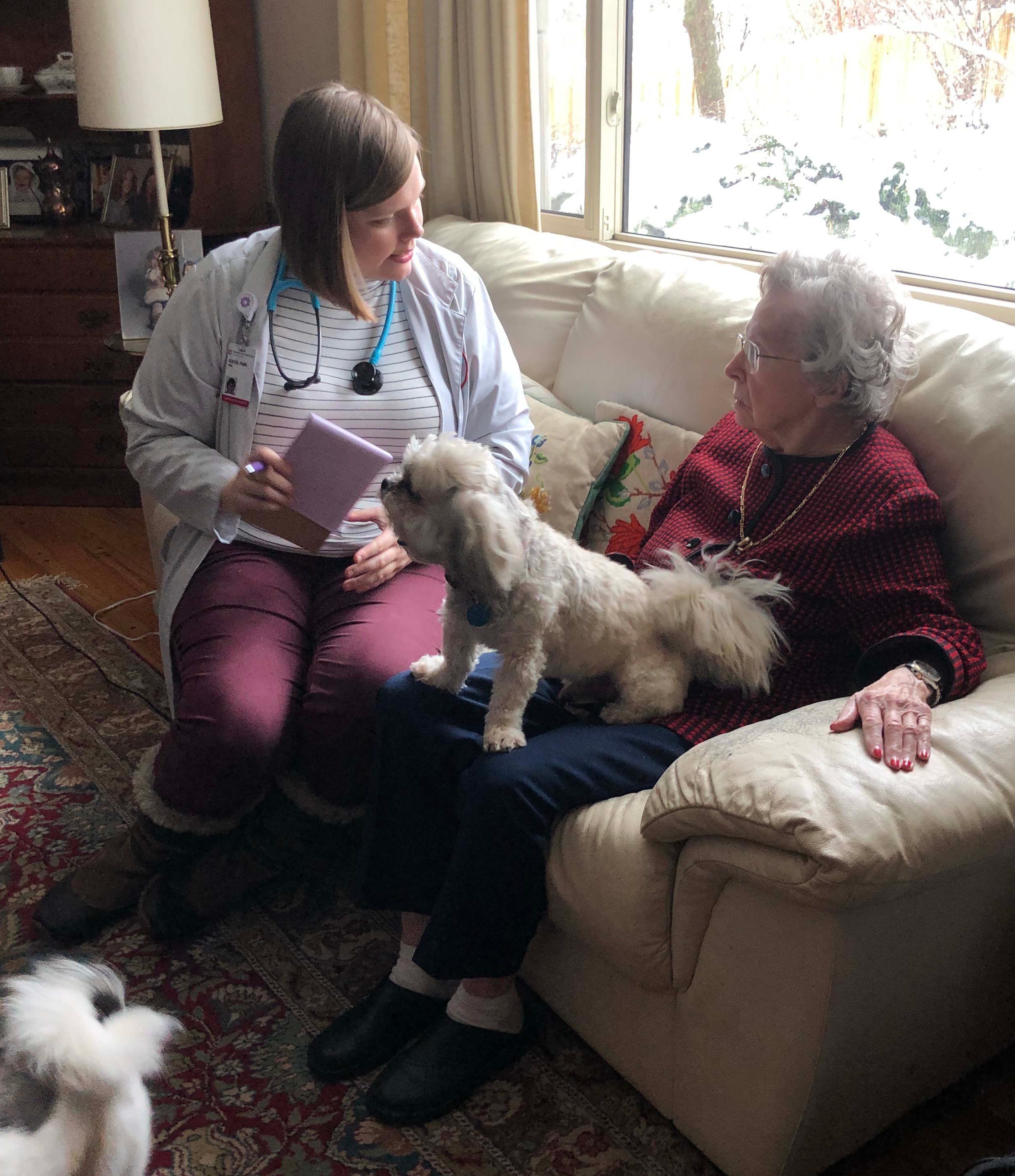A new way to keep homebound seniors and their pets healthy

His dog never suffered. The man made sure of it.
Aubrey Malott remembers the two of them coming into the veterinary outreach program where she volunteers, and she was struck by the health of the dog — compared to the health of the older man.
The man "had these open sores all over his legs, and you could tell he wasn’t in the best shape,” said Malott, a fourth-year veterinary medicine student at Ohio State. “But every time his pet needed something, he would just come in and take care of it right away.”
Pets can be great for seniors, offering comfort, companionship and motivation to exercise. Nearly 90 percent of older pet owners surveyed by the National Poll on Healthy Aging said their pets help them better enjoy life.
But when ailing and aging pet owners have challenges of money or mobility, they can’t always care for themselves and their animals.
So some, like the man Malott saw, forgo their own care. Others are forced to give up their beloved pets. Still others suffer with their cats and dogs, neither human nor animal receiving the medical care they need.
A first-of-its-kind program at Ohio State is trying to address both by sending nurses, veterinarians and social workers into community homes.
The Pet Owner and Pet Care program, a joint effort launched in 2019 by Ohio State’s colleges of Nursing, Veterinary Medicine and Social Work, brings students and supervising faculty members to homebound adults who can’t afford or physically access care. Bernadette Melnyk, dean of Ohio State’s College of Nursing and the university’s chief wellness officer, is the creator and principal investigator for the program, funded through a Hillman Foundation Emergent Innovation grant.
"This collaborative partnership among our colleges has great potential to change the face of well care," Melnyk said, "not only for the population of people and pets in our own community, but also to serve as a national model for the country to emulate.”
The program, which is being piloted through 2019, sends a team out to a home weekly for four weeks, with the focus shifting for each visit. Typically, the first visit involves physical exams and blood draws for pets.
“We found people were a lot more reserved talking about themselves,” Malott said. “They were wanting to focus on their pet’s health first.”

By the second visit, when the nursing team usually takes the lead, the residents have started to trust their visitors, said co-investigator Laurie Millward, an assistant professor in the College of Veterinary Medicine who leads outreach efforts for the college. That makes it easier to conduct exams and discuss personal health concerns.
Receiving care at home was key for client Donna Cramblett, 88, who was having trouble seeing doctors because of the time she found herself spending in waiting rooms.
“You have to sit and wait so long, and I’m not a patient person,” Cramblett said, “so this program for someone like me is great . … They took my blood pressure and mostly just talked to me and had me walk a bit. It was not a high-pressure situation at all.”
The team also checked on the dogs in Cramblett’s house, which numbered seven at the time — Cramblett lives with her daughter Betsy Colin, who fosters dogs for a rescue group.
“I didn’t expect them to be so compassionate and care about everything,” said Colin, who cannot drive because of a neurological disorder. “They even looked at the foster dogs.”
At the third visit, the social work team sets up safety nets for the clients, Millward said, walking them through ways to access community services including food, transportation and social events, and helping them prepare end-of-life plans — including what should happen to their pets if the owners pass.
And then, after four weeks, the teams wrap up their work and say goodbye. It’s a parting that has become unexpectedly touching — Millward has seen her students blossom working out in the field, and the students have seen their relationships with clients deepen in just a month.
“I know the most stressful thing for the clients is that they had six people coming into their home,” Malott said. “But by the end, by the time our four weeks were over, one client said, ‘I’ll miss you guys. I don’t know what to do next Wednesday.”